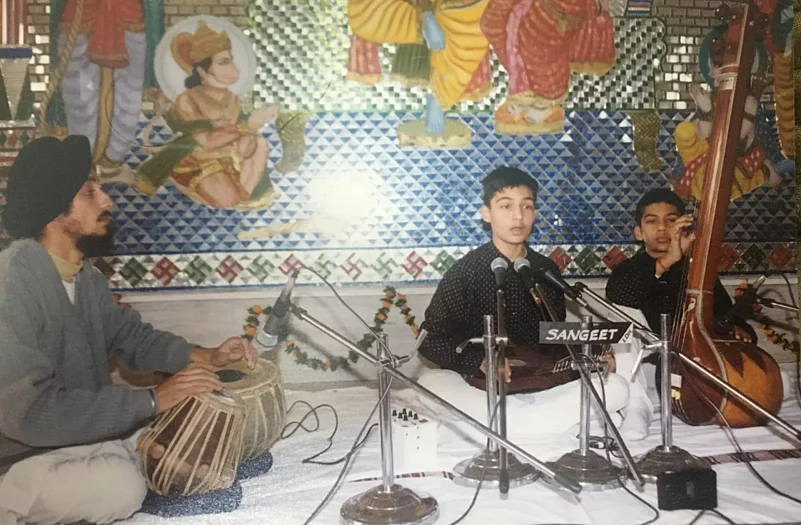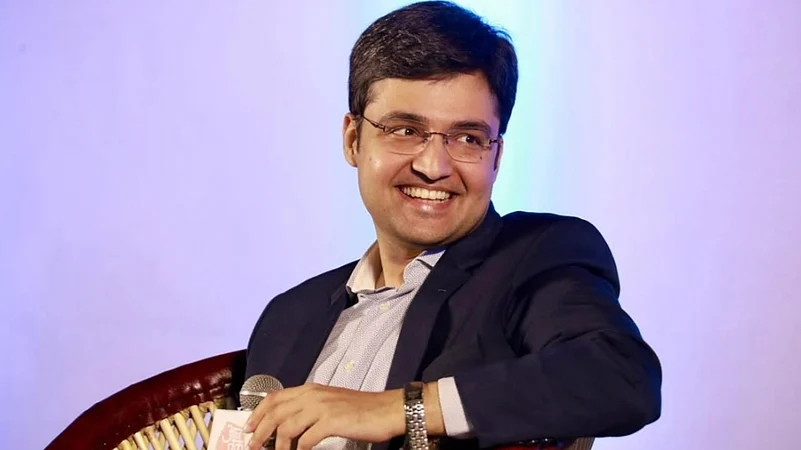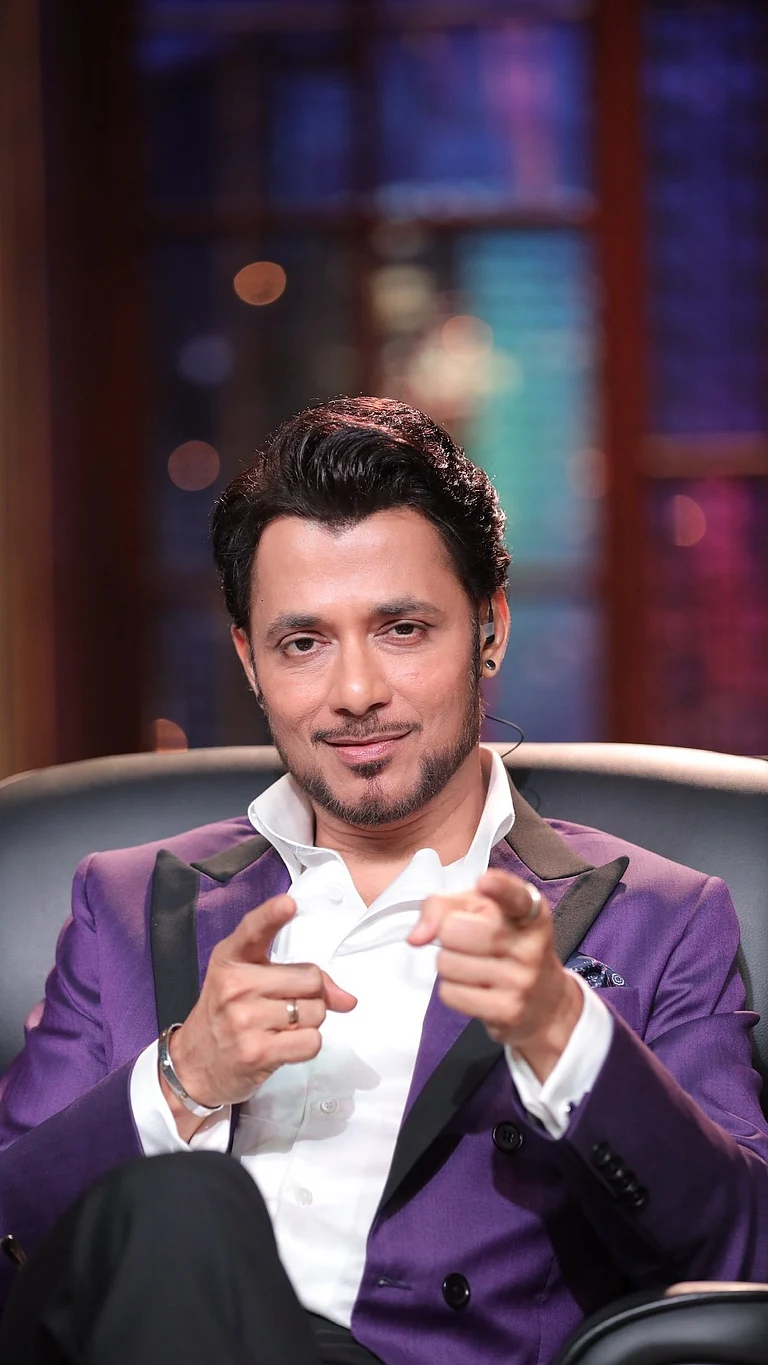
Kashish Mittal topped IIT-JEE with AIR 4 and became an IAS officer at 21, later serving at NITI Aayog where he worked on AI, rural electrification, and digital health strategies.
In 2019, he quit the civil services to pursue Hindustani classical music, earning an A-grade artist rating from All India Radio.
Mittal then joined Microsoft Research to work on AI and cloud solutions for rural India, combining his tech expertise with grassroots impact.
He is now the co-founder of Disha AI, a Bengaluru-based startup building regional language AI tutors to make education more accessible and inclusive.
It was sometime in 2019. As a young bureaucrat sat alone in a quiet office in Delhi’s NITI Aayog, he didn't know whether to follow his head or heart. He was confused.
But it wasn't a policy question that was puzzling him.
On his desk lay two lives, one, of an IAS officer shaping the country’s AI and EV strategies; the other, of a classical vocalist who had once sung at the foot of the Tansen Samaroha stage in Gwalior. The air was still, but something inside Kashish Mittal was beginning to stir.
In India, where success is often measured by one’s ability to crack exams contested by millions of candidates, Mittal had arrived early and emphatically, AIR 4 in the IIT-JEE, an IAS officer at 21, and a rising star in governance. But alongside the official memos and cabinet notes, he carried a tanpura.
His story doesn’t split cleanly between left-brain and right-brain, science and art, head and heart.
Today, Mittal is building something new again: he co-leads Disha AI, a Bengaluru-based startup that builds AI-powered tutors in Indian languages, aimed at democratising access to education.
A Musical Childhood
Far from a tech lab or a government office, the compelling story of Kashish began in Jalandhar, Punjab when he was only 8. There, in his modest home, the young lad's musical talent began to find voice as he trained for hours under Professor Harvinder Singh. He later became a disciple of Pandit Yashpal, a senior maestro of the Agra Gharana.
His first public performance came at just 11, an early indication that music wouldn’t just be a side interest, but a serious, lifelong pursuit.

“My parents were deeply passionate about Indian classical music but never got the chance to learn,” he says. “So, they made sure my brother and I did.”
That early immersion into the Agra Gharana under maestros was more than extracurricular. It became his compass. “Even during my JEE prep, music gave me calm. Even as a bureaucrat, I travelled with music in my heart.”
Now, Mittal is channeling that same discipline into something else: transforming how Indians learn: in classrooms, on mobile phones, and in the language they think in.
The Pursuit of Purpose
Mittal’s academic story reads like a résumé fantasy. All-India Rank 4 in the IIT-JEE, B.Tech in Computer Science from IIT Delhi, followed by success at the UPSC exam on his first attempt. He entered the civil services at just 21 years and two days, just within the eligibility age limit.
During his time in bureaucracy, he was SDM and ADC in Chandigarh, before moving to Tawang in Arunachal Pradesh as DC. Later, he joined the Ministry of External Affairs and then served in the Vice Chairman’s office at NITI Aayog, where he was part of pivotal initiatives: the National Strategy on AI, the Electric Vehicles policy, and the Aspirational Districts Programme, a data-driven model to lift India’s most underserved districts.
“The exposure was unparalleled,” he says. “From city to state to centre, I saw how policy is made and how it is implemented.”
While he describes his years in the civil services as enriching and satisfying, something remained unresolved.
Mittal says his identity as an artist remained constant. “I was often asked, ‘You’re an IAS officer, but you’re also still doing music?’ And I’d always correct them: music came first.”
A Third Voice
After a decade-long career, the decision to resign from the IAS in 2019 wasn’t sudden, nor was it a rejection of the system. “It was never about transfers or politics,” he clarifies. “It was about time to honour the artist within.”
What finally moved him was a moment of clarity, shared in a NITI office. “I was visibly confused. A senior colleague asked me what was wrong. I told her, ‘I don't know whether to listen to my heart or my head.’”
She gave him an answer he didn’t expect: “Listen to neither. Find your third voice.”
That ‘third voice’, he says, was his inner compass. “I spent time alone. I let the question simmer. And then the answer came with great clarity.”
That same year, he was recognised as an A-grade vocalist by All India Radio and as an established artist by ICCR, opening doors to global performances. “It felt like everything was aligning.”
Even so, after his resignation, Mittal wasn’t planning a corporate pivot. But conversations with former IIT batchmates led to one with Sriram Rajamani, then Managing Director of Microsoft Research India (MSR). There, a new division, SCAI (Societal Impact through Cloud and AI) was exploring how AI could create social impact.
Mittal joined MSR, co-leading BlendNet, a pilot project that deployed satellite-powered edge devices to beam digital learning content into rural areas with no internet access.
“The idea was to break the connectivity barrier. Even without 4G or 5G, students could access high-quality content just by being near these devices,” he explains.
The project took him across Jharkhand, UP, Bihar and Karnataka, setting up rural pilots with partners like SES (a European satellite provider) and Novopay, a retail network. “The impact was real. You saw it in people’s faces, in the silence of those who could finally listen, learn and dream.”
In the process, he met Apurv Mehra, a like-minded technologist and former MSR colleague who would become his co-founder. “We’d seen an impact. We’d seen the gap. Now we want to bridge it.”
In the Language of Dreams
Founded in early 2025 and backed by South Park Commons, Disha AI is a deeply Indian answer to a global problem: how do you make personalized, high-quality learning available to those without privilege or proximity?
Their bet: AI tutors trained in Indian languages, optimised for voice, dialect, and real-world context.
“Even today, finding a good tutor is a luxury. One-to-one teaching dramatically improves outcomes, that’s the Bloom’s Two Sigma problem,” Mittal says. “We’re trying to replicate that through AI.”
Disha AI’s initial focus is on job-seekers and working professionals, offering upskilling pathways in areas where traditional education lags. Crucially, it’s built for India’s multilingual reality. “Learning must happen in the language you think in, that’s how confidence is built.”
The team, which now includes third co-founder Sanchit Sharma, is running structured pilots across regions and user cohorts. “We want to prove that AI tutors can work in Hindi, Kannada, Bengali and not just English.”
However, Mittal’s years in governance, and later at MSR, deeply influenced Disha AI’s product philosophy.
“We’re building for reach and relevance, not just scale,” he says. “Tech should be a great leveller especially in a country like India where the barriers are often invisible: language, context, access.”
What sets Disha apart is its ambition to embed AI into systems of inclusion; not just education, but confidence-building, skilling, and self-worth. “We’re not trying to replace teachers. We’re trying to unlock teachers for everyone.”
The Artist Within
Despite the demanding life of a founder, Mittal continues to perform at festivals like Jashn-e-Rekhta, Tansen Samaroh and Hari Vallabh Sangeet Sammelan which are one of India’s oldest classical music festivals, where he first listened to legends like Pandit Shivkumar Sharma.
At one performance, he recalls, Sharma smiled and said, “These awards, these accolades, they stay behind. They don’t come on stage.”
That line stayed with him. “The stage doesn’t care who you are; it rewards only your riyaaz. Same with startups.”
Mittal has been conferred numerous awards and honours, including the Punjab State Award for Art & Culture by the Hon’ble Chief Minister of Punjab (2007), Saraswati Samman by IIT Delhi (2010), and Naad Shri Samman for significant contribution to Hindustani Classical Music (2018), among others.
He also teaches a few serious students, keeping his Guru’s tradition alive. “My Guru once took me to his Guru’s house in Agra. He became a student again the moment he walked in. That taught me that no matter how far you go, you must stay a student.”
But what about the mission ahead?
Through all his pivots from governance to code, from stage to startup, Mittal’s inner thread remains constant: a commitment to meaningful impact.
“We were privileged with good schools, IIT and the best mentors. But in India, that’s still the exception. Our thesis is simple: good education shouldn’t be a privilege.”
He’s also sharply aware of how overwhelming the landscape is for India’s youth. “There’s so much noise, content, courses, advice. We want to be the filter. The trusted layer. The tutor who sees you.”
That clarity drives the long days and late nights. “Being a founder is lonely,” he admits. “Some mornings you sing in front of hundreds. Next, you're debugging user flows with your dev team.”
But he wouldn’t have it any other way. So, what drives him now? He smiles. “I think I’ve found that third voice.”
Asked how he wishes to be remembered, he turns to Ghalib:
“Puchte hain wo, ke Ghalib kaun hai?
Koi batlaaye, ke hum batlaayein kya.”































